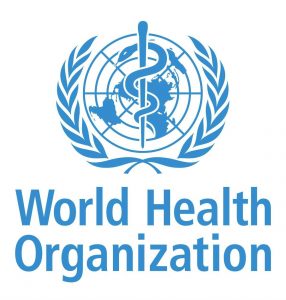Today’s Current Affairs: 5th August 2024 for UPSC IAS exams, State PSC exams, SSC CGL, State SSC, RRB, Railways, Banking Exam & IBPS, etc
Table of Contents
Typhoon-K Vehicle:

The Indo-Tibetan Border Police (ITBP) has successfully conducted a demonstration and trial of the formidable Typhoon vehicle at its Transport Battalion in Chandigarh.
- Typhoon-K Vehicle is a Russian-made 4×4 Mine-Resistant Ambush Protected (MRAP) vehicle.
- It was developed by Remdiesel, a subsidiary of KamAZ.
- It was developed for the safe transportation of troops and military cargo in areas with a high risk of mines.
- It can also be configured as a command post vehicle, ambulance and logistics support vehicle.
- It measures 6.7 m long, 2.5 m wide, and 2.8 m high. It has a curb weight of 13,700 kg and can carry a payload of 2,000 kg.
- It has a maximum road speed of 100 km/h and a range of up to 1,000 km without refueling.
- The vehicle accommodates two crew members and eight fully equipped troops.
- The hull features four side doors and a rear door. The roof is fitted with two hatches for observation, firing, and emergency exit purposes.
- It can withstand the impact of an 8 kg TNT explosion under the floor and a 10kg TNT explosion under the wheels.
- The vehicle also features a signature reduction package, an all-around video surveillance system, and an automatic fire-extinguishing unit.
- It is fitted with a stabilised remotely controlled weapon station (RCWS).
- The RCWS can be armed with medium-to-heavy machine guns.
WHO Global Traditional Medicine Centre:

India has committed $85 million over 10 years, 2022–2032, to support the programming of the World Health Organization (WHO) Global Traditional Medicine Centre.
- The WHO-India donor agreement is part of a $250 million investment from India in support of the establishment of the WHO GCTM in 2022, which includes financial support for the work plan of the Centre, interim premises and a new building.
- WHO GCTM in Jamnagar, Gujarat, is a knowledge centre for traditional medicine.
- The Indian Prime Minister laid the foundation stone for the centre in the presence of the WHO Director-General in April 2022.
- It is the first global outpost centre for traditional medicine across the globe and was established under the Ministry of AYUSH.
- The primary objective of WHO GCTM is to harness the potential of traditional medicine from across the world through modern science and technology and improve the overall health of the communities the world over.
- It will concentrate on building a solid evidence base for policies and standards on traditional medicine practices and products and help countries integrate it as appropriate into their health systems and regulate its quality and safety for optimal and sustainable impact.
Price Monitoring System App:

The Union Minister of Consumer Affairs, Food and Public Distribution & New and Renewable Energy launched Version 4.0 of the Price Monitoring System (PMS) Mobile app.
- Price Monitoring System App in the Department of Consumer Affairs is responsible for monitoring prices of selected essential commodities.
- To improve the quality of price data, the department launched a Mobile App in 2021 – the PMS App – for the reporting of daily prices by the price reporting centres.
- Retail and wholesale prices of commodities from 550 centers are received daily from the State Civil Supplies Departments of the respective State Governments through Mobile App developed by the Department.
- At present the price is monitored for 22 essential commodities (Rice, Wheat, Atta, Gram Dal, Tur (Arhar) Dal, Urad Dal, Moong Dal, Masur Dal, Sugar, Gur, Groundnut Oil, Mustard Oil, Vanaspati, Sunflower Oil, Soya Oil, Palm Oil, Tea, Milk, Potato, Onion, Tomato and Salt).
- The newly added 16 items included are Bajra, Jowar, Ragi, Suji (wheat), Maida (wheat), Besan, Ghee, Butter, Brinjal, Egg, Black Pepper, Coriander, Cummin seed, Red chillies, Turmeric powder and Banana.
- The 38 commodities constitute close to 31% of the total CPI weights as against 26.5% of CPI weights captured by the 22 commodities.
- The price data monitored by the Department provides advance inputs for policy decisions for the Government, RBI and analysts regarding CPI inflation.
Maritime Partnership Exercise:

A Maritime Partnership Exercise (MPX) was conducted between India and Russia in St. Petersburg.
- Maritime Partnership Exercise was conducted between Russia and India on the occasion of the 328th Russian Navy Day.
- It involved INS Tabar naval ship from India and Soobrazitelny from Russia.
- It marks a significant milestone in the maritime cooperation between India and Russia, reinforcing the commitment of both nations to maintain peace, stability and security in the region.
- The MPX involved a series of complex naval manoeuvers, including communication drills, Search & Rescue tactics and Replenishment at Sea serials. Ships from both navies demonstrated high levels of professionalism and interoperability.
- The Indian Navy remains committed to fostering partnerships with navies across the world.
- The MPX with the Russian Navy reinforces the strong bilateral naval ties, further strengthening our resolve and commitment towards ensuring enhanced cooperation in the maritime domain.
Four-Ringed Butterfly:

A four-ringed butterfly was rediscovered in the Namdapha National Park after 61 years
- Four-ringed butterfly a species of Satyrinae butterfly.
- It was photographed during a survey to document the butterfly diversity in the Miao range of the Namdapha National Park during 2018-19.
- It was identified based on general morphological patterns and habitat.
- It was last reported in 1957 from (eastern) Assam’s Margherita.
- It is considered a rich genus of the family Nymphalidae which has some 6,000 species of butterflies. Of the 35 Ypthima species recorded in India, 23 have been reported from the northeast.
- The highest Ypthima diversity is in China, particularly in the Yunnan and Sichuan provinces. The diversity is also vast in Nepal, Bhutan and Myanmar apart from the northeastern part of India.
Namdapha National Park:
- It is located in the state of Arunachal Pradesh.
- It is flanked by the Patkai hills to the south and southeast and by the Himalayas to the north.
- It is located between the Dapha Bum range of the Mishmi Hills and the Patkai range. The region is a part of both the Palearctic and Indo-Malayan biogeographic areas.
- Namdapha is the name of a river which originates from Daphabum and meets the Noa-Dehing river.
- This river flows right across in a North-South direction of the National Park and hence the name Namdapha has been given.
Giant Radio Source:

A team led by Indian radio astronomers have reported the discovery of 34 new giant radio sources (GRSs) using the Giant Metrewave Radio Telescope (GMRT).
- Giant Radio Source are among the largest objects in the Universe.
- These are powered by a supermassive black hole, typically with a mass ranging from ten million to one billion times that of the Sun.
- These super black holes release jets of hot plasma and produce massive lobes of radio emissions, spanning much greater distances than the visible size of the galaxy.
- Astronomers believe that GRSs represent the final stage of radio galaxy evolution due to their enormous sizes.
- They help in understanding the evolution of radio sources and studying the intergalactic medium that confines the lobes far from the parent galaxy.
- The study of giant radio galaxies helps scientists comprehend the relationship between black hole activity and the evolution of radio galaxies.
- It also helps scientists understand more about the distribution and behaviour of matter in the cosmos.
Standardised Precipitation Index:

The India Meteorological Department has analysed trends for precipitation and drought-like conditions over India using the ‘Standardised Precipitation Index’ (SPI).
- Standardised Precipitation Index estimates wet or dry conditions based on precipitation variables.
- The SPI calculation is based on the long-term precipitation record for a particular location and long-term period (longer than 30 years is desirable).
- This index is negative for drought and positive for wet conditions. As the dry or wet conditions become more severe, the index becomes more negative or positive respectively.
- It includes timescales of 1, 2, 3, 6, 9, 12, 24, 36, 48, 60 and 72 months.
Sub-Classification Of SCs And STs:

On August 1, 2024, the Supreme Court of India ruled in the case of State of Punjab and Ors Vs Davinder Singh and Ors that states can sub-classify Scheduled Castes (SCs) and Scheduled Tribes (STs) to grant additional quotas for the more disadvantaged within these categories.
Judgment Overview:
- Sub-Classification Allowed: States can now create sub-categories within SCs and STs for more targeted reservations.
- Creamy Layer Inclusion: The Court emphasized the need to exclude the ‘creamy layer’—more advantaged members—within SC and ST groups from affirmative action benefits.
- Empirical Study Requirement: States must conduct studies before implementing sub-classification, and their decisions are subject to judicial review.
- Educational and Socio-Economic Factors: The criteria may include educational background, similar to the OBC model but adjusted for SC/ST contexts
- The state cannot earmark 100% reservation for a sub-class while allowing sub-classification
- The State’s power to sub-classify is subject to judicial review.
- Sub-classification does not violate the principle of equality enshrined under Article 14 and the President’s exclusive authority under Article 341 to identify SCs.
Kindlins : Adapter Proteins

A study explored the role of Kindlins—adapter proteins involved in cell signalling—in various cancers.
- These proteins are critical for transferring extracellular cues to biochemical signals within cells, influencing multiple signalling pathways essential for cellular homeostasis.
- Mutations in Kindlins, caused by carcinogens like nicotine and UV rays, can disrupt this balance and contribute to cancer progression.
- The researchers analysed data from 10,000 patients with 33 cancer types, revealing that Kindlin 1 regulates the immune microenvironment in breast cancer, while Kindlin 2 governs cancer-specific metabolic processes and HIPPO signalling, which promotes cell migration and invasion.
- The study emphasized the importance of Kindlins in tumour progression, metastasis, and epithelial-mesenchymal transition (EMT).
- Their findings suggest that Kindlins are involved in essential mechano-sensitive pathways and their dysfunction is linked to adverse survival outcomes.
- The research provides evidence for Kindlins as potential targets for innovative cancer treatments, offering new strategies to address chemoresistance and tumour relapse.




